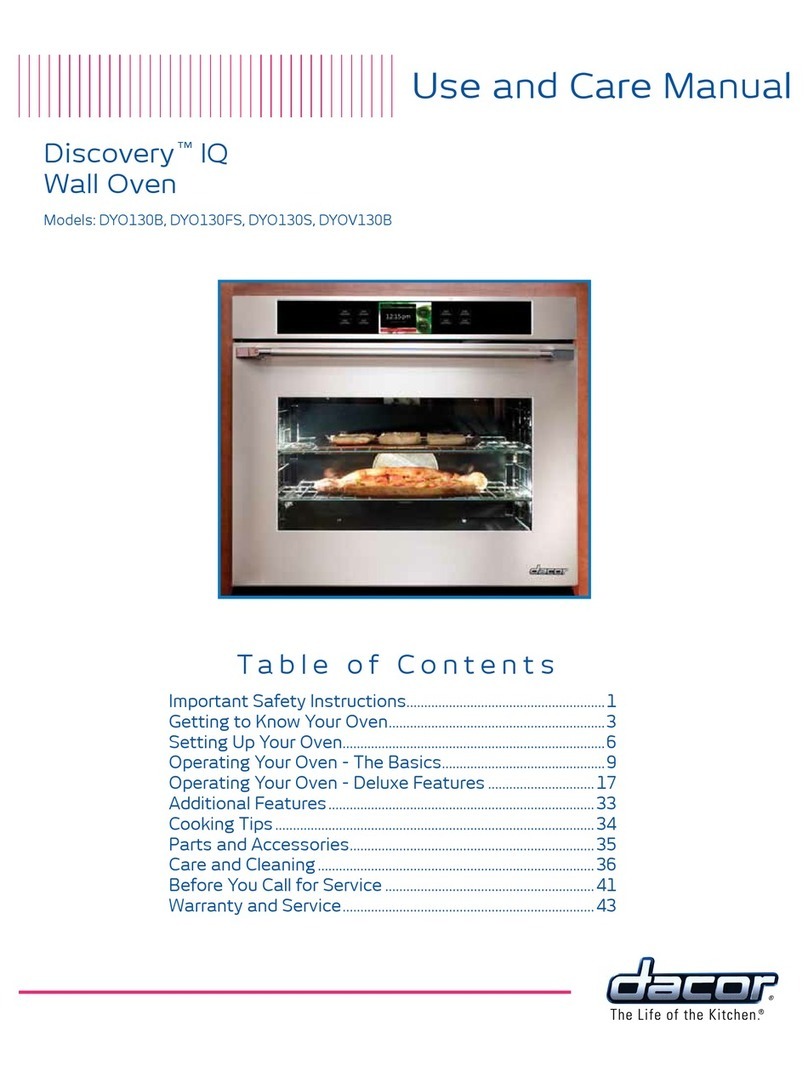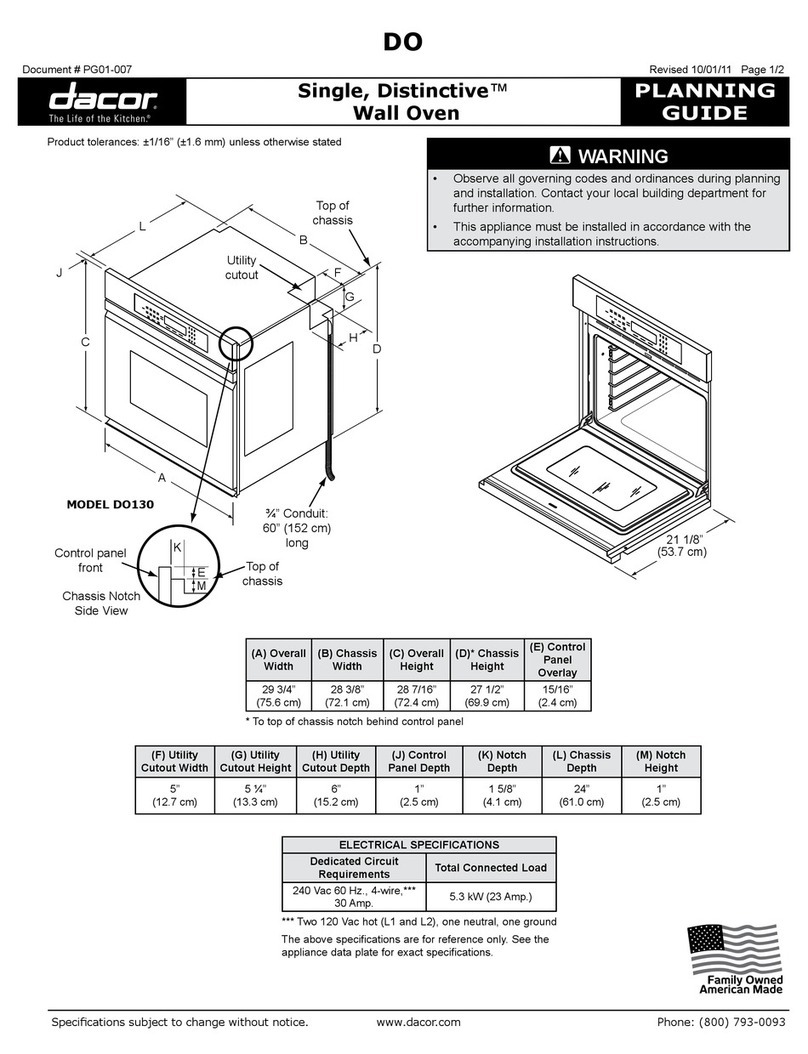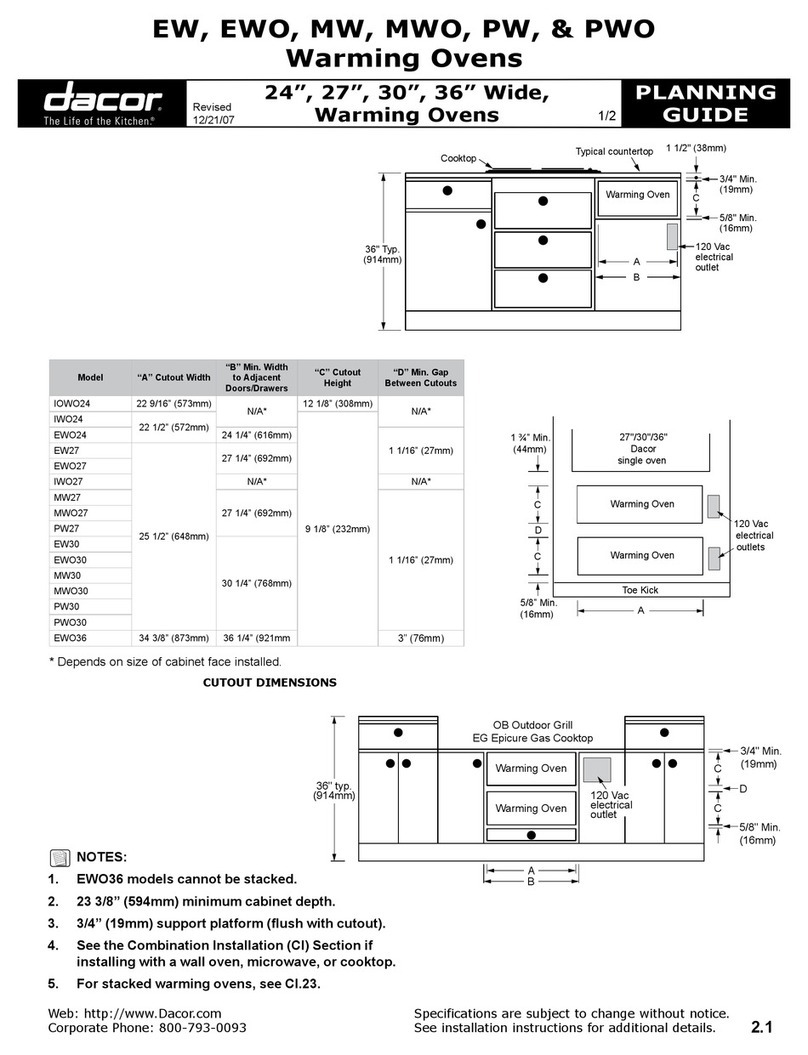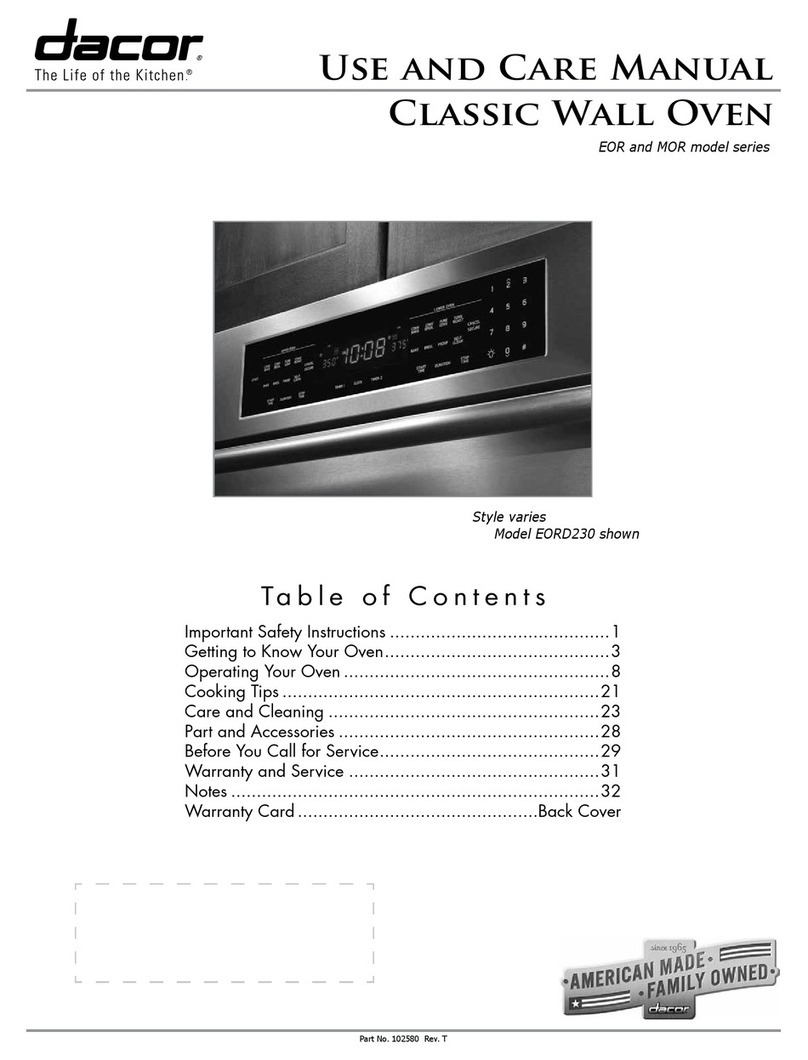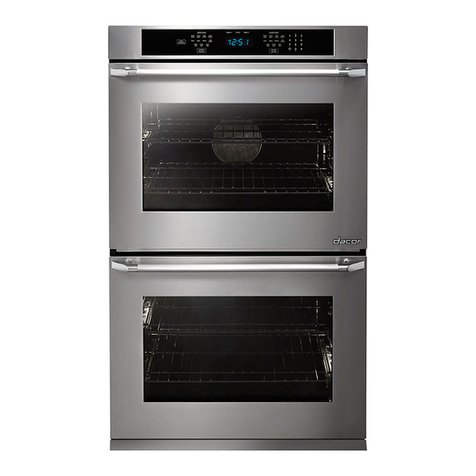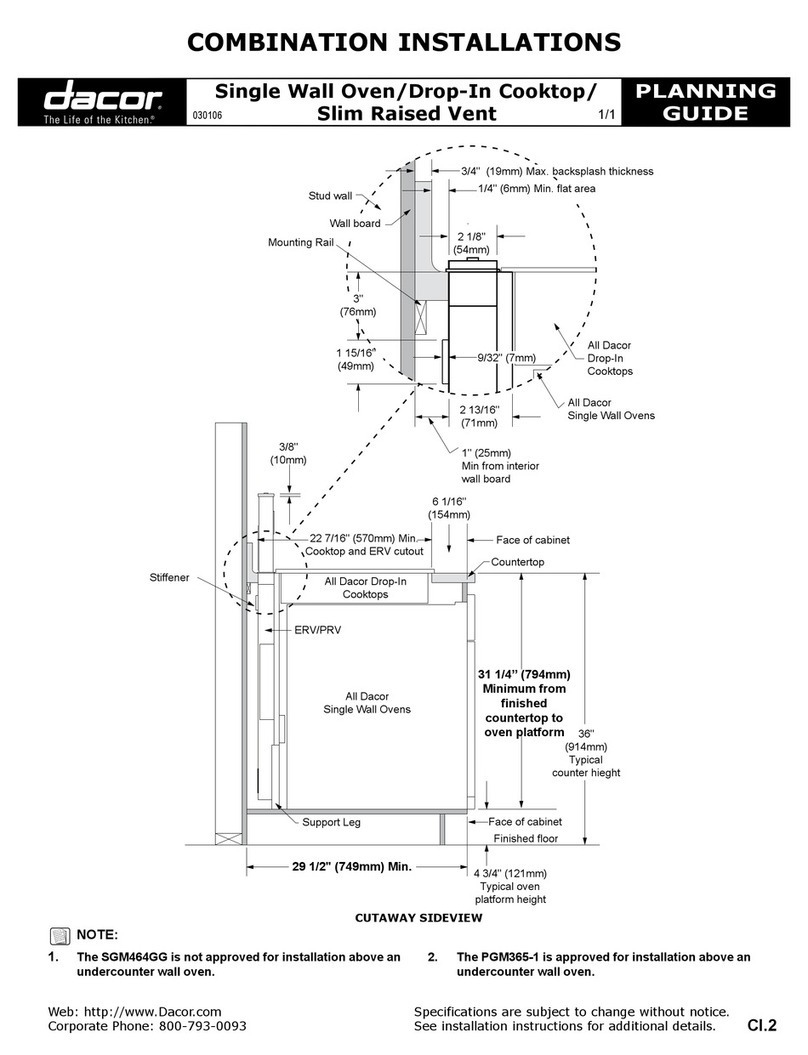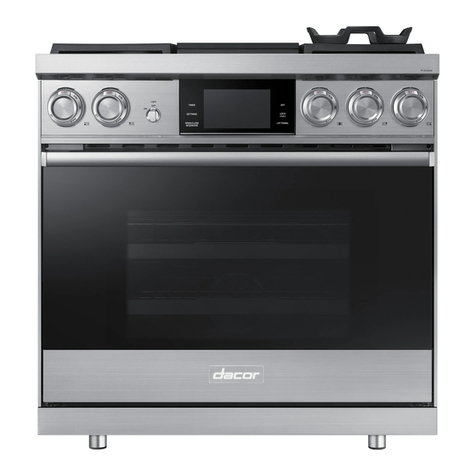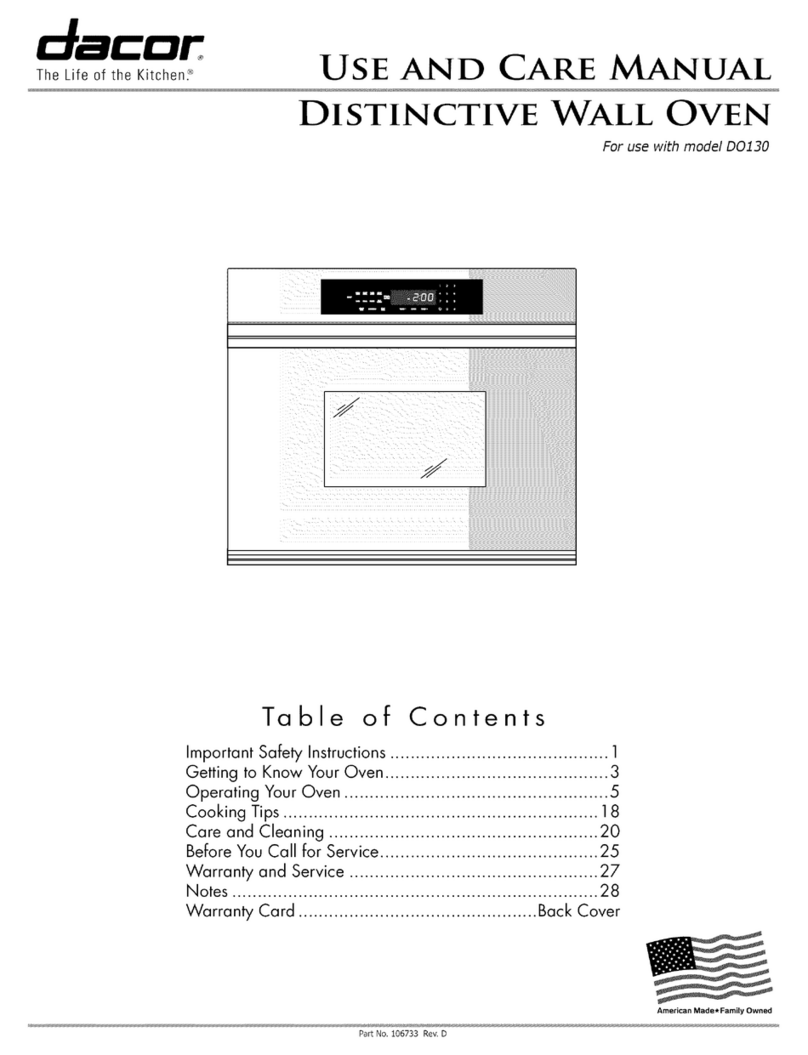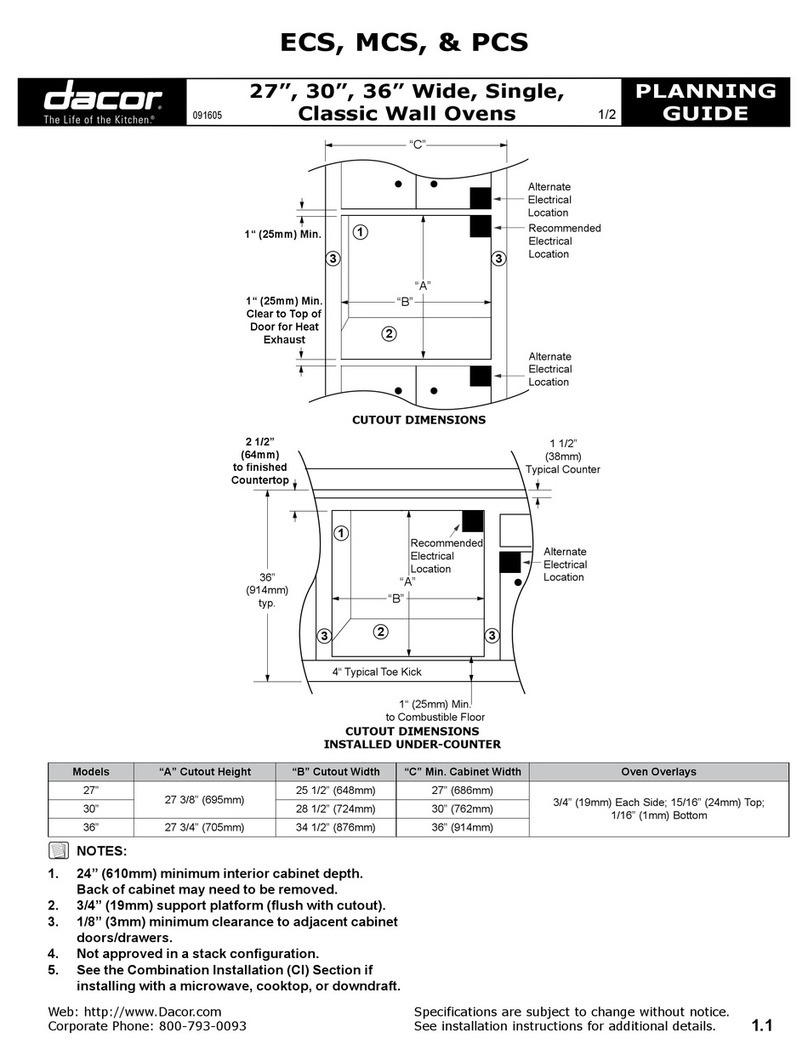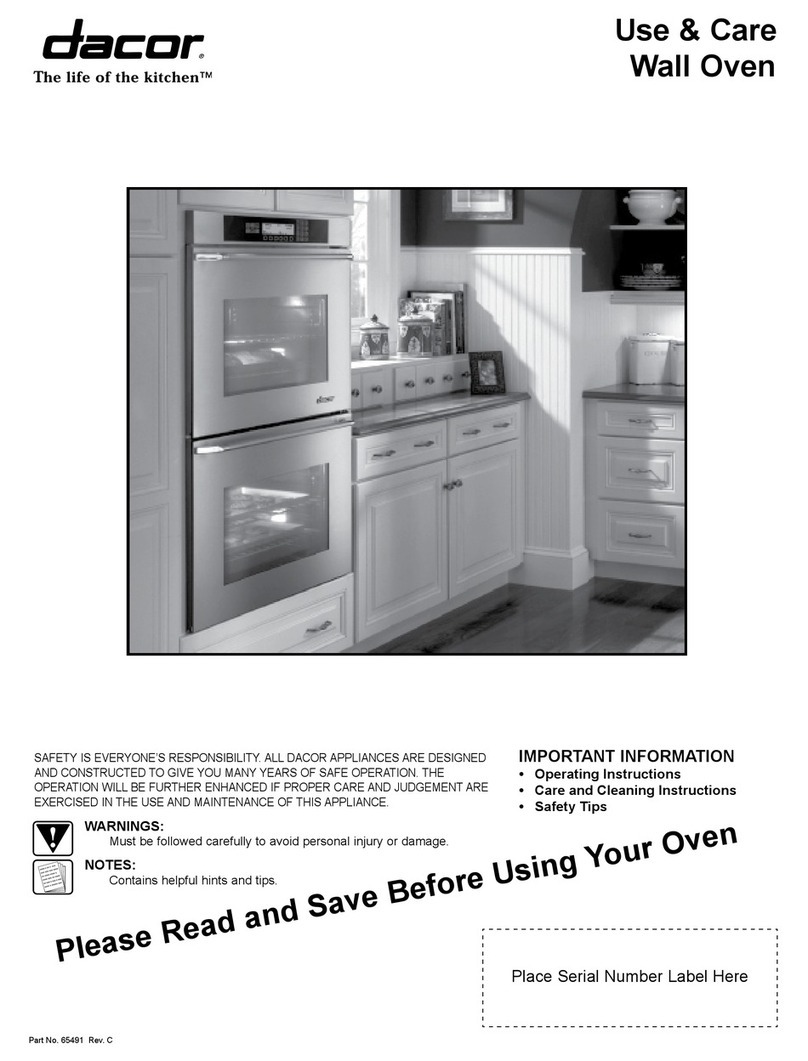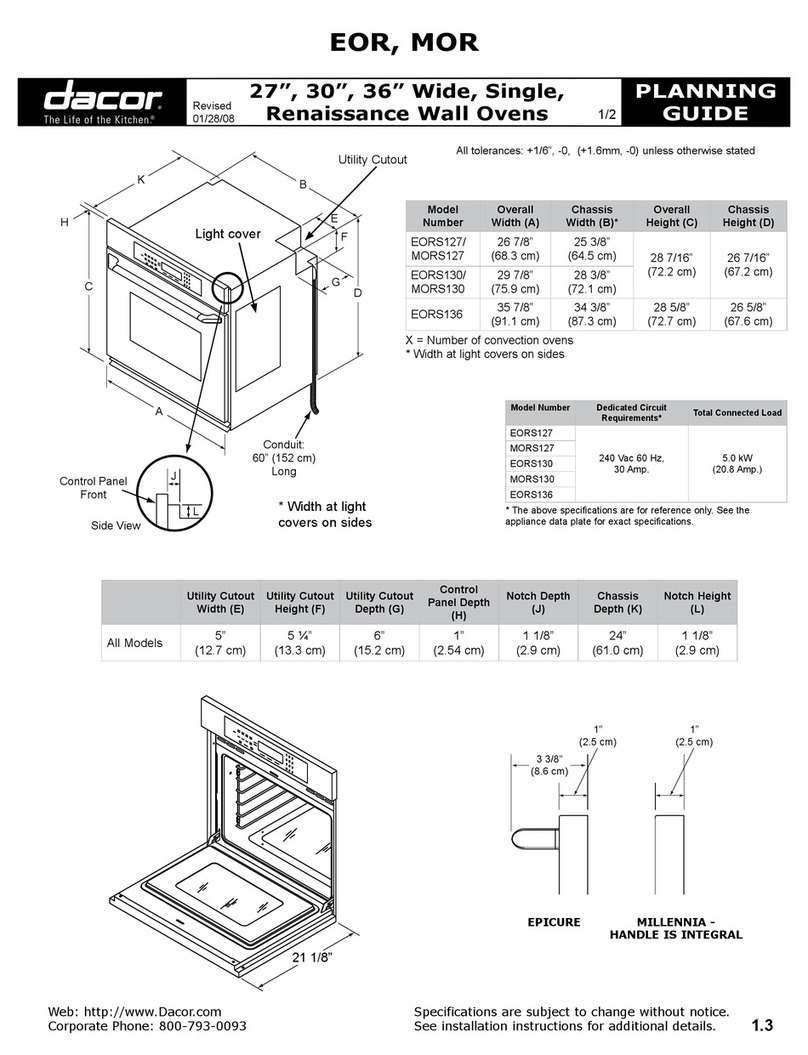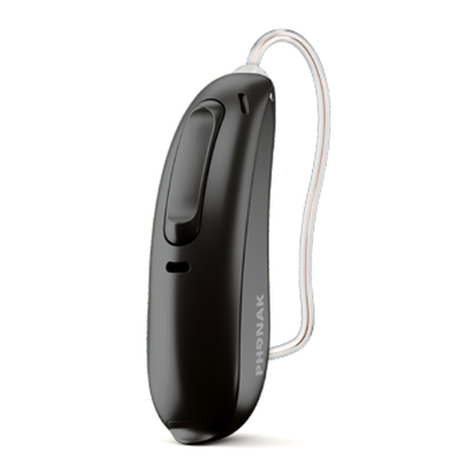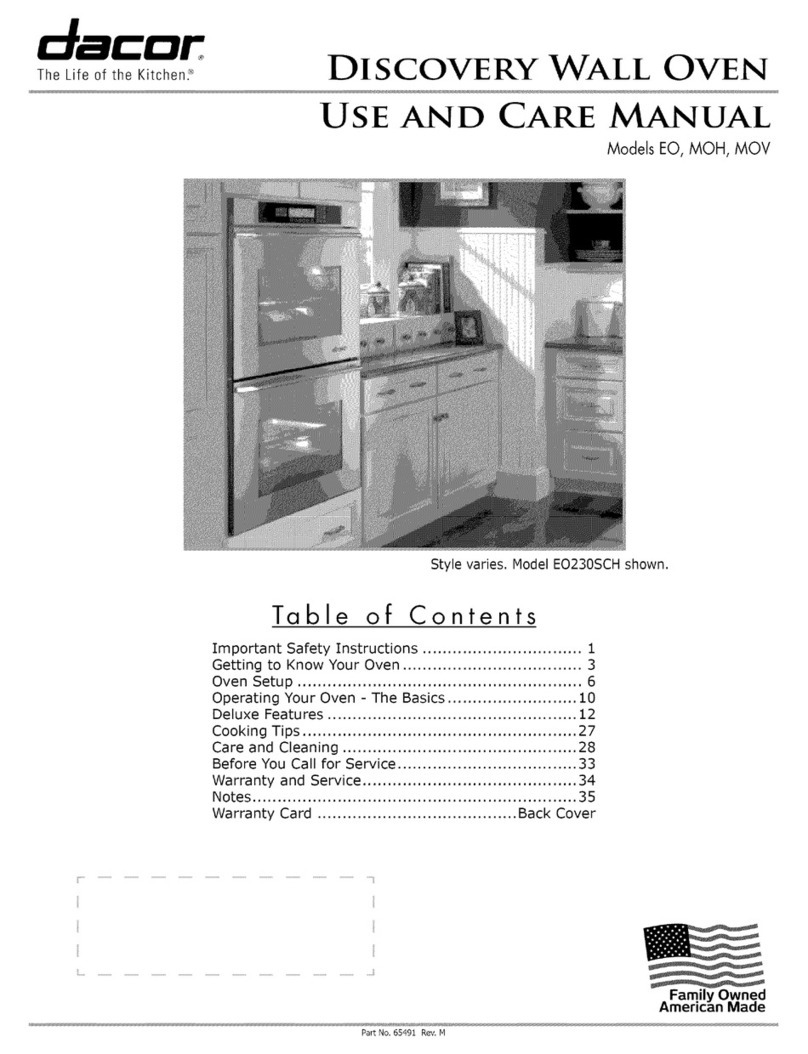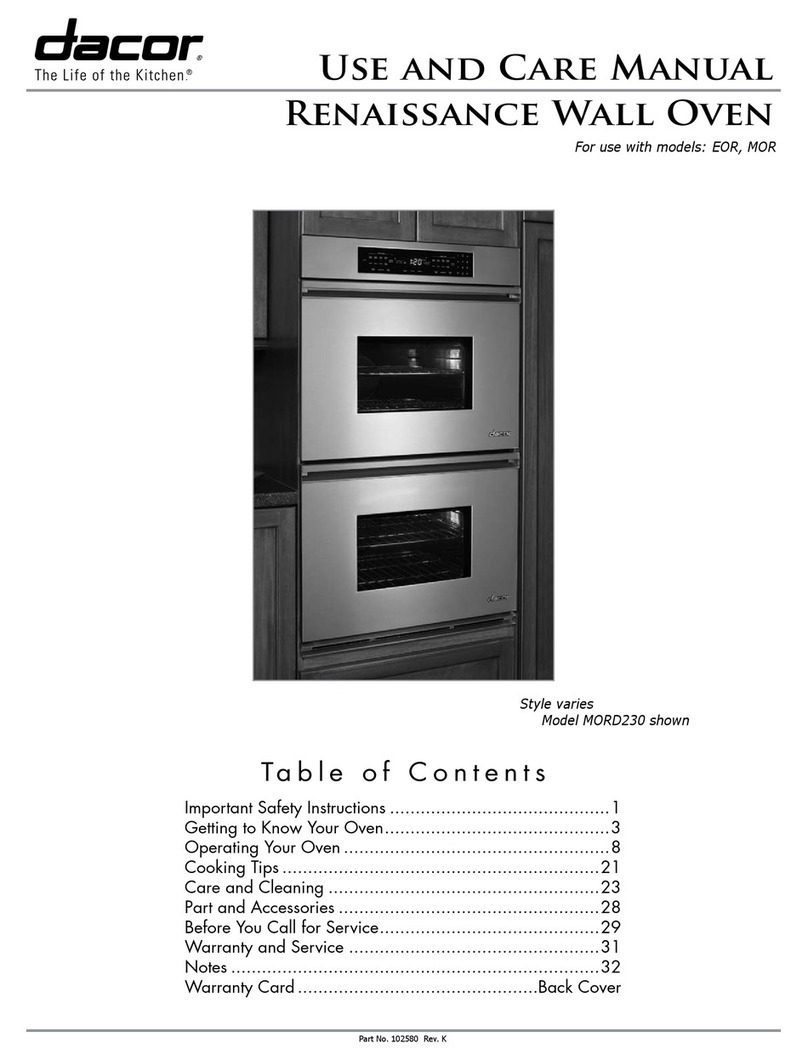
5
15. When a recipe calls for creaming butter and sugar, the butter should be at room temperature and should be creamy, not
liquid or hard. Proper creaming will yield the best results for cookies and cakes. A proper creaming will be pale in color
and appear light and fluffy.
16. Bakeware should not touch the side walls of the ovens or should not come in contact with each other. This will result in
hot spots on the food.
17. To check an air- leavened cake’s doneness (angel food, chiffon, sponge, etc) press the center gently with your finger in
the center or in a fold on the top of the cake. If it feels sticky or does not spring back, it needs more time.
18. A dense cake (banana bread, pound cake, etc) can be checked by inserting a toothpick or skewer in or near the center.
Any uncooked batter on the toothpick or skewer indicates that a longer cook time is necessary.
19. Measure liquids using a liquid measuring pitcher (oil, water, milk), and measure dry ingredients using a measuring cup
(flour, sugar, etc).
20. When using the Dacor Guide, recipe ingredients can be adjusted to your tastes. Method, equipment used, and rack
positions should be followed closely for best results. On these wall ovens, you may also save your personal settings in the
Saved Guide. For more information, see the Saved Guide section in the Use and Care Manual.
RECOMMENDED BAKEWARE
If purchasing bakeware, there are two special pans required for convection cooking: low rimmed, light colored aluminum
cookie sheets and a roasting pan with a “V-shaped” rack that fits inside. Please refer to your Use and Care Manual for
part numbers on each of these.
Almost any bakeware will work in this oven-just be sure that if it is a covered dish or a thicker, denser pan, use
Convection Bake, Surround Convection Bake, Bake or Surround Bake.
Use pan size and type recommended by the recipes.
Shiny, reflective pans are best for cakes, quick breads, muffins, cookies, and pies. This will prevent the crust from
browning too fast, as a darker finish may cause it to do so.
Medium-gauge aluminum baking sheets with low sides are best in the convection modes so that the air is able to circu
late fully around the food.
Bake most frozen foods in their original foil containers, and place on a cookie sheet. Follow the package recommendations
for baking.
When using glass bakeware, only lower the temperature by 25 degrees (Most glass cookware manufacturers also
recommend lowering the temperature 25 degrees when using their products. It only needs to be lowered once).
BEST FOR PURE CONVECTION MODE: use light colored aluminum cookie sheets and cake pans, tart pans, metal bake
ware, muffin tins, any flexible silicone bakeware, shallow ceramic and glass dishes and tart pans
BEST FOR CONVECTION BAKE or SURROUND BAKE use any cast iron cookware, deep baking pans such as ceramic
casserole dishes.
BEST FOR BAKE or SURROUND BAKE MODE: use any covered items, such as a roast in an oven roasting bag, a covered
roasting pan, or a large terra cotta covered roasting pan.
BEST FOR SURROUND CONVECTION BAKE MODE: use shallow baking pan or cookie sheet
NOT RECOMMENDED: dark colored pans produce darker baked goods. Also, any dented or warped pans will
affect the evenness of the baked items.
Baking Tips
